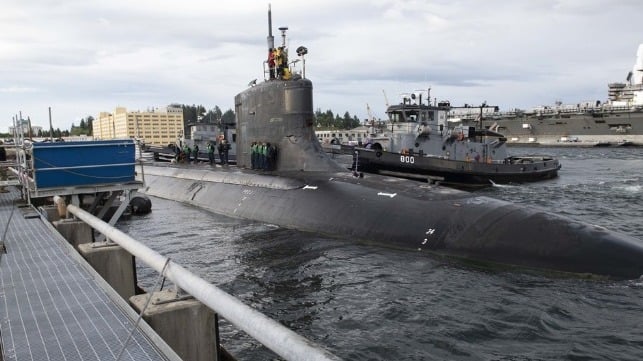Seawolf-Class Attack Sub Damaged in Collision in the South China Sea

One of the most sophisticated submarines in the world, the USS Connecticut, sustained an underwater collision five days ago at an undisclosed position in the South China Sea, according to USNI News and other sources. At least 11 crewmembers sustained minor cuts, scrapes and bruises in the incident, and Navy Times reports that Connecticut has had to transit on the surface due to damage.
“USS Connecticut (SSN-22) struck an object while submerged on the afternoon of Oct. 2, while operating in international waters in the Indo-Pacific region," Pacific Fleet spokesman Capt. Bill Clinton told USNI News. "There are no life-threatening injuries. The submarine remains in a safe and stable condition. USS Connecticut’s nuclear propulsion plant and spaces were not affected and remain fully operational. The extent of damage to the remainder of the submarine is being assessed."
He added that the U.S. Navy has not asked for assistance from third parties. The sub will return to a port in the 7th Fleet region, USNI reported; Navy Times understands that the port of refuge is the naval base at Guam, and Connecticut is due to arrive today.

that matters most
Get the latest maritime news delivered to your inbox daily.
USS Connecticut is a Seawolf-class nuclear powered attack submarine. The class of three includes two standard-length hulls designed for high-end submarine warfare (USS Seawolf and USS Connecticut), which were built and commissioned in the 1990s. The third and final vessel, USS Jimmy Carter, has a stretched-length hull designed for covert operations.
Despite their age, the Seawolfs are some of the most advanced submarines ever delivered, and they are reportedly much quieter than the Los Angeles-class and Virginia-class boats that make up the majority of the Navy's attack sub fleet. With a reported top speed of 35 knots and an outsized magazine of torpedoes and missiles, they are also the fastest and best-armed in the inventory. However, they were also much more expensive to construct than the Los Angeles-class, and the Seawolf program was eventually shortened to just three vessels because of post-Cold War cost cuts.
